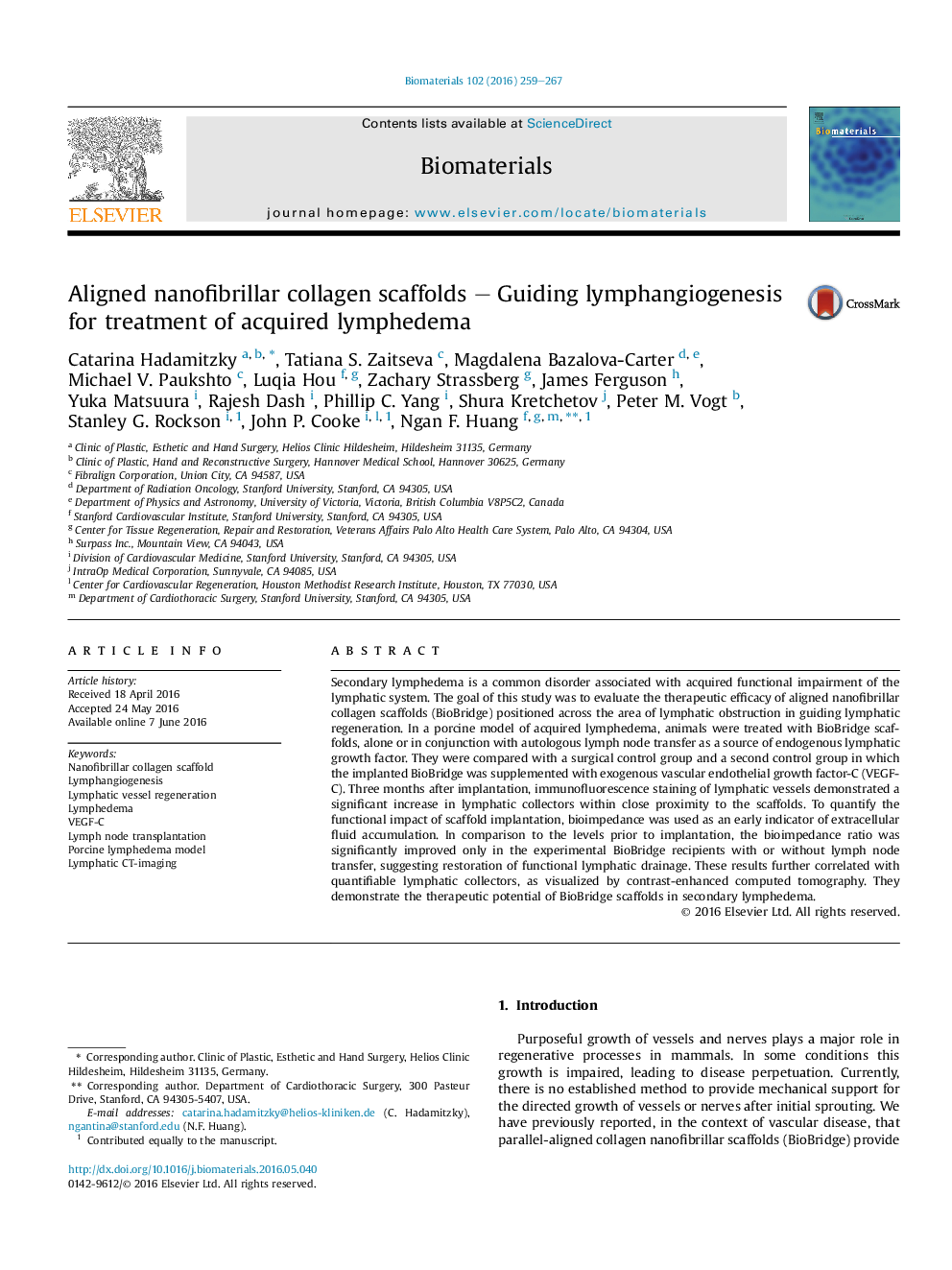| Article ID | Journal | Published Year | Pages | File Type |
|---|---|---|---|---|
| 5317 | Biomaterials | 2016 | 9 Pages |
Secondary lymphedema is a common disorder associated with acquired functional impairment of the lymphatic system. The goal of this study was to evaluate the therapeutic efficacy of aligned nanofibrillar collagen scaffolds (BioBridge) positioned across the area of lymphatic obstruction in guiding lymphatic regeneration. In a porcine model of acquired lymphedema, animals were treated with BioBridge scaffolds, alone or in conjunction with autologous lymph node transfer as a source of endogenous lymphatic growth factor. They were compared with a surgical control group and a second control group in which the implanted BioBridge was supplemented with exogenous vascular endothelial growth factor-C (VEGF-C). Three months after implantation, immunofluorescence staining of lymphatic vessels demonstrated a significant increase in lymphatic collectors within close proximity to the scaffolds. To quantify the functional impact of scaffold implantation, bioimpedance was used as an early indicator of extracellular fluid accumulation. In comparison to the levels prior to implantation, the bioimpedance ratio was significantly improved only in the experimental BioBridge recipients with or without lymph node transfer, suggesting restoration of functional lymphatic drainage. These results further correlated with quantifiable lymphatic collectors, as visualized by contrast-enhanced computed tomography. They demonstrate the therapeutic potential of BioBridge scaffolds in secondary lymphedema.
